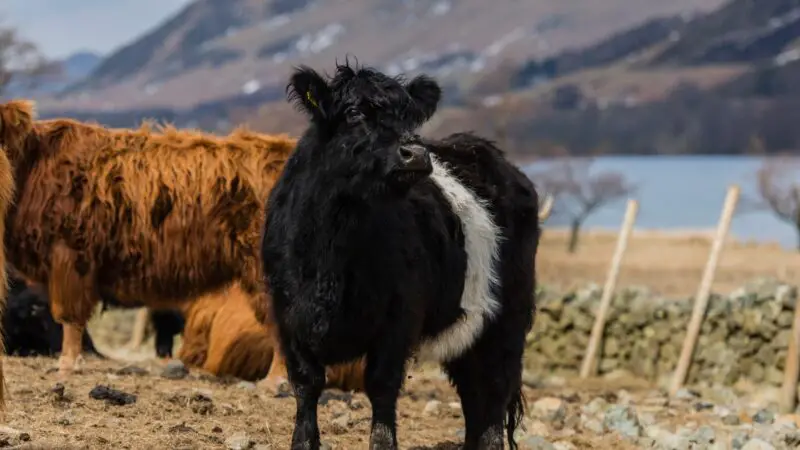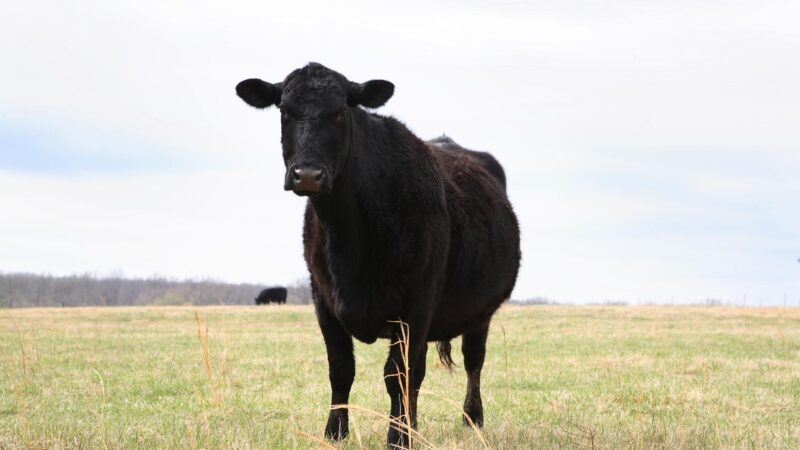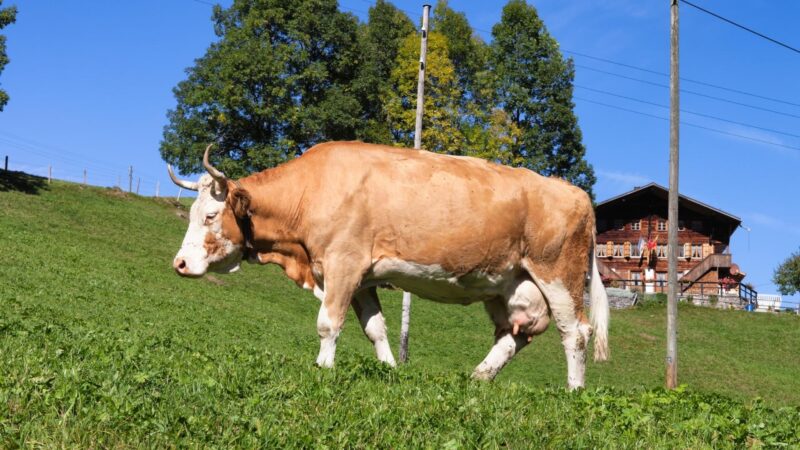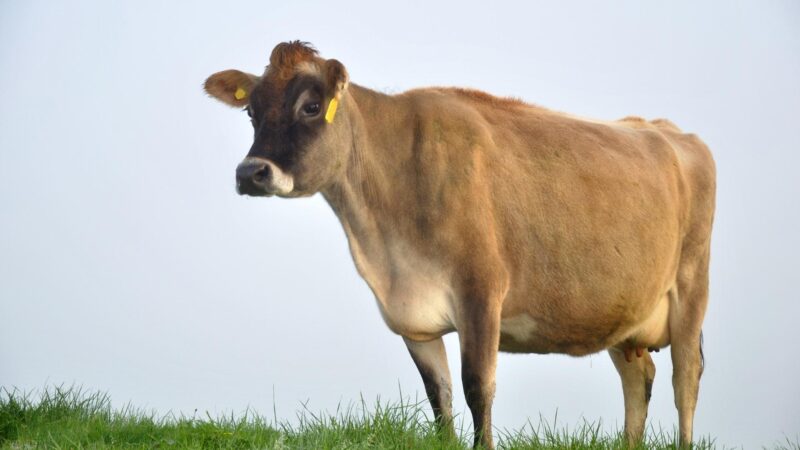It’s no doubt that everyone marvels at the size of cows when they’re seen grazing on pastures or banding together in herds, as they appear to have large muscle mass compared to most farm animals.
A typical cow weighs 1,300 pounds. Heifers, or baby cows, weigh 65 to 90 pounds at birth. Beef cows weigh an average of 1,200 pounds while dairy cows are approximately 1,500 pounds. However, cow weight varies depending on the breed of the dairy or beef cow.
This article will provide you with information you need to know about how much cows weigh depending on type, breed, and age, how to raise cows for personal consumption or commercial use, and the best cow breeds for homesteading.
Can You Keep a Cow in Your Backyard?
You can keep a cow in your backyard as long as you properly feed and manage it. You can even raise it for dairy, meat production, or both. In fact, many countries rely on household cattle for their milk and meat supply.
In the United States, backyard livestock owners in urban and peri-urban areas have greatly increased over the last decade according to this study.
Backyard cows are usually raised in sheds or small enclosures. Under the right living conditions, a dairy cow can make 6 to 12 gallons of milk a day while an 880-pound cow carcass can produce 410 to 585 pounds of meat.
Their produce is either used for personal consumption, which is then considered a form of subsistence-oriented backyard farming, or sold to markets and commercial buyers, a form of market-oriented backyard farming.
How Much Space Do You Need for 1 Cow?
The backyard shed or barn space for a single cow should be about 20 to 30 square feet if the cow has access to foraging grounds. Otherwise, they would need 35 to 50 square feet for a beef-producing cow and up to 100 square feet for a dairy cow.
For commercial farms and pastures, each cow should have a minimum of 1.8 acres of space with enough forage grounds for them to cover.
At What Age Do You Butcher a Cow?
The slaughter age of cows is around 12 to 36 months of age, but it depends on the quality grade butchers and slaughterhouses are going for.
Below is a chart showing the different quality grades for slaughtering cows, their age requirement, and qualifications:
| Quality Grade | Age Requirement | Qualifications |
| Choice | 30 to 42 months | Moderately thick fat covers the rump, back, ribs, loin, and crops while the brisket, cod, and flanks are full and have firm muscles. |
| Select | Up to 30 months | Thin fat covers the loin and back. Brisket, cod, flanks, and twist are slightly full and have slightly firm muscles. |
| Standard | 30 to 42 months | Very thin fat covering the loin, back, and ribs. |
| Commercial | Over 42 months | Slightly thick (for cows aged a little over 42 months) to moderately thick fat (for very mature cows) covering the rump, back, ribs, and loin. Muscling is moderately thick. |
| Utility | Under 30 months | Very thin fat covering the rump, loin, and back. The crops, cod, brisket, and flanks are slightly thin with slight fullness. |
How Long Do You Raise a Cow Before Slaughter?
Grass-fed cows are ready for slaughter after growing for 26 to 30 months, while grain-fed cows have 14 to 18 months before slaughter.
How Much Does the Average Cow Weigh?
According to animal specialists, the latest estimates in 2016 stated that the average cow weighs 1,300 pounds.
The average weight of cows has increased since 1950 due to changes in the environment, feed resources, and management systems, which include a cow’s feed intake and body maintenance.
Average cow weight was 1,000 pounds in 1950, 1,047 pounds in 1975, and 1,369 pounds in 2005. During the early 1990s through 2004, there was a rapid increase in cow weight which is linked to changes in body composition and not frame size.
Genetic trends analysis shows that muscularity, carcass weights, and back fat have increased over time which, in turn, also increases cow weight.
How Much Does a Baby Cow Weigh?
Heifer weight at birth depends on the breed, but in general, baby cows weigh about 65 to 90 pounds. It takes about 2 years for baby cows to reach their full mature weight. However, they reach their desired breeding age at around 13 to 15 months.
Here’s a chart showing the different cow breeds and their body weight ranges:
| Age (months) | Holstein | Jersey | Brown Swiss | Guernsey | Ayrshire | Milking Shorthorn |
| 1 | 82 to 143 | 93 to 108 | 134 to 163 | 122 to 143 | 131 to 154 | 128 to 160 |
| 2 | 113 to 238 | 122 to 146 | 187 to 223 | 166 to 193 | 177 to 205 | 175 to 210 |
| 3 | 149 to 284 | 155 to 177 | 240 to 283 | 203 to 233 | 223 to 256 | 223 to 262 |
| 4 | 189 to 339 | 183 to 217 | 293 to 343 | 255 to 299 | 269 to 307 | 272 to 315 |
| 5 | 218 to 411 | 233 to 278 | 345 to 403 | 299 to 354 | 315 to 357 | 320 to 370 |
| 10 | 422 to 776 | 391 to 483 | 597 to 694 | 511 to 588 | 538 to 602 | 564 to 653 |
| 12 | 504 to 843 | 471 to 548 | 693 to 805 | 576 to 674 | 624 to 697 | 658 to 765 |
| 13 | 504 to 913 | 500 to 571 | 739 to 859 | 643 to 756 | 666 to 743 | 705 to 820 |
| 15 | 582 to 931 | 565 to 640 | 829 to 963 | 740 to 866 | 748 to 834 | 794 to 926 |
How Much Does a Full-Grown Cow Weigh?
Full-grown or mature cows that are grown in continuous breeding systems weigh 1,100 to 1,300 pounds. Their carcasses will then produce about 700 to 850 pounds of meat, while milk outputs are expected to be 1 to 3 gallons a day for beef cows and 6 to 8 gallons for dairy cows.
How Much Does a Beef Cow Weigh?
Beef cows typically weigh an average of about 1,200 pounds, but it varies per beef cow breed.
Here are the different beef cow breeds and their mature weight ranges:
| Beef Cow Breed | Mature Weight (in pounds) |
| Angus | 1,000 to 1,300 |
| Hereford | 1,200 to 1,800 |
| Brahman | 1,000 to 1,400 |
| Beef Shorthorn | 1,450 to 1,800 |
| Simmental | 1,500 to 2,000 |
| Charolais | 1,250 to 1,600 |
| Red Poll | 1,200 to 1,650 |
| Limousin | 1,400 to 1,900 |
| South Devon | 1,000 to 1,300 |
| Gelbvieh | 1,600 to 1,800 |
| Chianina | 1,700 to 2,200 |
How Much Does a Cow Elk Weigh?
A fully mature elk cow weighs between 500 to 600 pounds, with a height of 4.5 feet at the shoulder. It is important to know that, like cattle, female elks are referred to as cows, while male elks are called bulls.
How Much Does a Dairy Cow Weigh?
The average weight for mature dairy cows is approximately 1,500 pounds, but it varies slightly per cow breed.
Here are the different dairy cow breeds and their mature weight ranges:
| Dairy Cow Breed | Mature Weight (in pounds) |
| Holstein | 1,300 to 1,500 |
| Jersey | 800 to 1,200 |
| Brown Swiss | 1,300 to 1,400 |
| Guernsey | 1,200 to 1,300 |
| Ayrshire | 1,200 to 1,400 |
| Milking Shorthorn | 1,250 to 1,400 |
How Much Does a Miniature Cow Weigh?
Depending on the breed, the average weight range for miniature cows is 450 to 850 pounds, which is about one-third to half the size of a standard-sized cow.
The table below shows the weight ranges of different miniature cow breeds:
| Miniature Cow Breed | Mature Weight (in pounds) |
| Lowline Angus | 700 to 1,100 |
| Hereford | 650 to 1,000 |
| Jersey | 500 to 800 |
| Zebu | 300 to 500 |
| Texas Longhorn | 350 to 800 |
| Dexter | 660 to 780 |
| Belted Galloway | 500 to 700 |
| Highland | 400 to 600 |
How Much Does Half a Cow Weigh?
Since the average cow weighs 1,300 pounds, half a cow would weigh 650 pounds. Half a beef cow would weigh an average of 600 pounds, while half a dairy cow is 750 pounds.
What Else Do I Need to Know About Raising Cows?
Since cows can either be raised for milk and meat production, for personal or commercial uses, as well as simply for selling their calves and heifers, know which one you’re going for before investing in cows since raising cows will depend on your purpose.
Milk production is more costly compared to beef production. Regardless of what you choose, make sure you conduct market research to know your potential buyers and how well your produce will sell in the market.
However, if you’re raising them for your benefit, simply weigh the costs and benefits of raising cows.
Which Breeds of Cows Are Good for Homesteading?
Mini Cows

Miniature cows are more manageable compared to standard-sized cows because of their size. They’re perfect for backyards with not a lot of space as they only require half an acre for each cow. They’re also the most inexpensive choice as their diets are also halved drastically.
However, mini cows still require training to become tame. They can also be prone to having bad temperaments, depending on how you raise them.
Guernsey Cows

Guernsey cows are highly adaptable and can live in varying climates, under different management strategies, and can thrive in both confined spaces and pastures. Their milk is also ideal for cheese processing, which gives you a dual purpose when homesteading.
Moreover, they have no documented genetic disorders that are deemed undesirable and have overall mild temperaments.
Angus Cows

Angus cows are popular and renowned cows for their muscular bodies that are perfect for meat production. Crossbreeding also allowed them to improve their milking capabilities.
They’re the ideal breed for homesteading since they provide both beef and milk. However, they require a lot of space as they naturally live in pastures. It also takes a while for them to get used to human presence, but they’re generally very docile.
Simmental Cows

Simmental cows are also adaptable as they have been grown in both small, rural areas to extensive farming operations. They’re also used for their breeding capabilities as they produce high beef yields. Crossbreeding has also allowed them to improve their milk quality.
They’re also characterized by their docile temperament and ideal mothering traits. Simmental cows are, overall, a good choice.
Jersey Cows

Jersey cows are another adaptable breed as they can survive under any farm management system, whether they’re in small areas or pastures. They’re also known for having great quality milk which contains more calcium and protein content compared to other breeds.
Raising them under stressful conditions will affect their growth and development, so they must be raised with extra care.
Hereford Cows

Herefords are characterized by their fast growth rates, longevity, docile temperament, and great beef quality. They can thrive in both yard or pasture feeding and are relatively the easiest to raise as they have the lowest labor costs.
If you’re in a bind, Hereford cows are the ideal cows for you and your homesteading plans.
In conclusion, cows weigh an average of 1,300 pounds, while heifers weigh 65 to 90 pounds at birth, beef cows are 1,200 pounds, and dairy cows are 1,500 pounds.
List of Sources
Miniature Cattle: For Real, for Pets, for Production
Monitoring Dairy Heifer Growth
Small-Scale and Backyard Livestock Owners Needs Assessment in the Western United States
